We haven’t had many invasive wildflowers (i.e. herbaceous plants) in our yard, but here are a few that we’ve had to work on:
Creeping bellflower (Campanula rapunculoides)
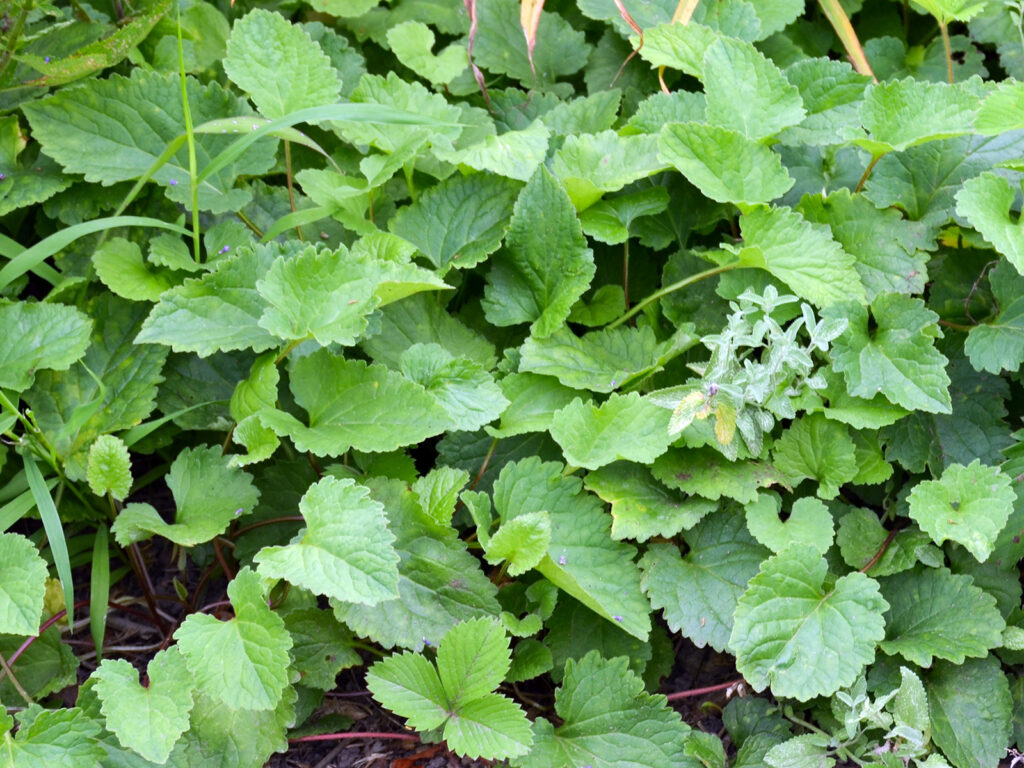
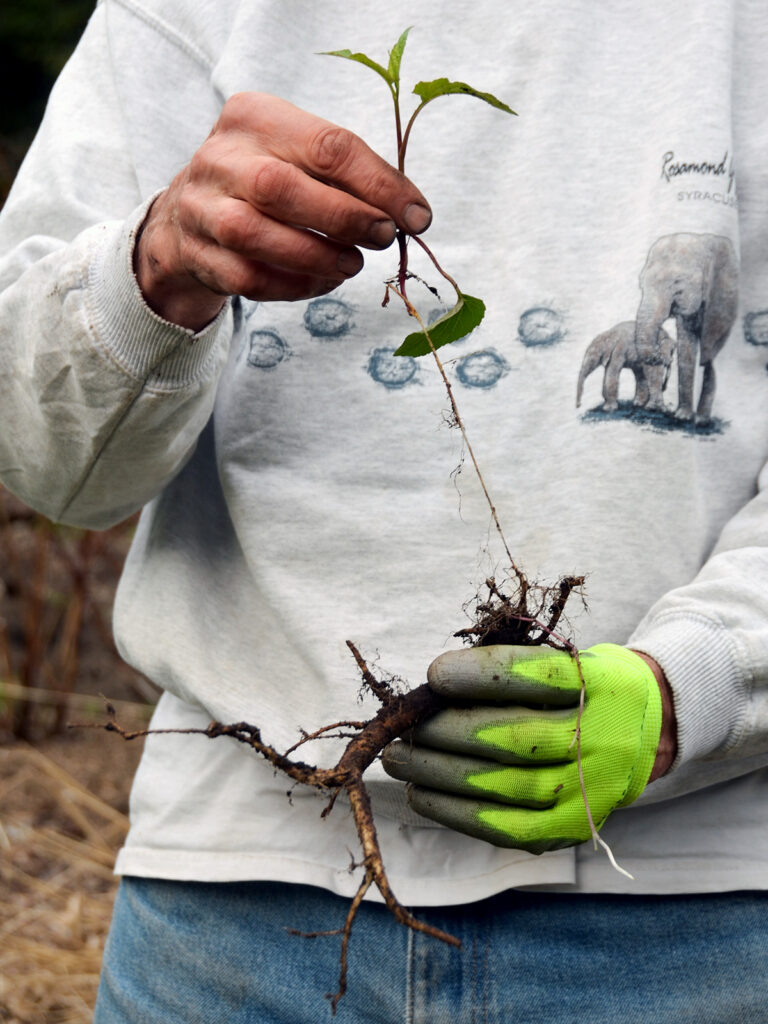
This is a horrifying plant — a real wolf in sheep’s clothing, since it is masked by a somewhat attractive purple flower. It was in our yard when we moved in, and, hey! free flowers!
I wish we had worked to eradicate it when we had only a small patch, but it has traveled to a larger area.
Its roots are so deep that it’s hard to eradicate. I’m afraid to transplant any other plant from that area for fear of spreading even more in my yard. By far our worst invasive in terms of ease of eradication!
- Learn more:
- Univ. of Michigan’s Matthaei Botanical Garden’s Invasive of the Week: Creeping bellflower – includes tips on eradicating it
- Accent on Natural Landscaping: Creeping bellflowers – my back aches!
Bishop’s weed (Aegopodium podagraria)
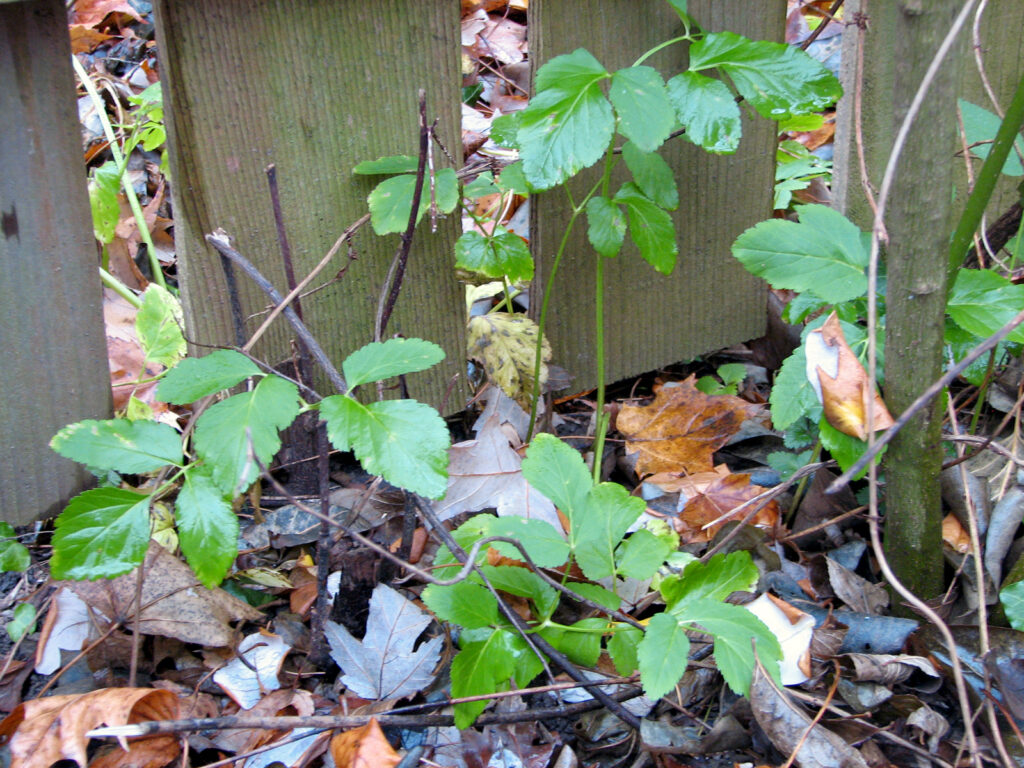
Bishop’s weed is the plant I was very worried about when we discovered it, shown here near our fence.
(We hadn’t planted it ourselves; it just appeared.)
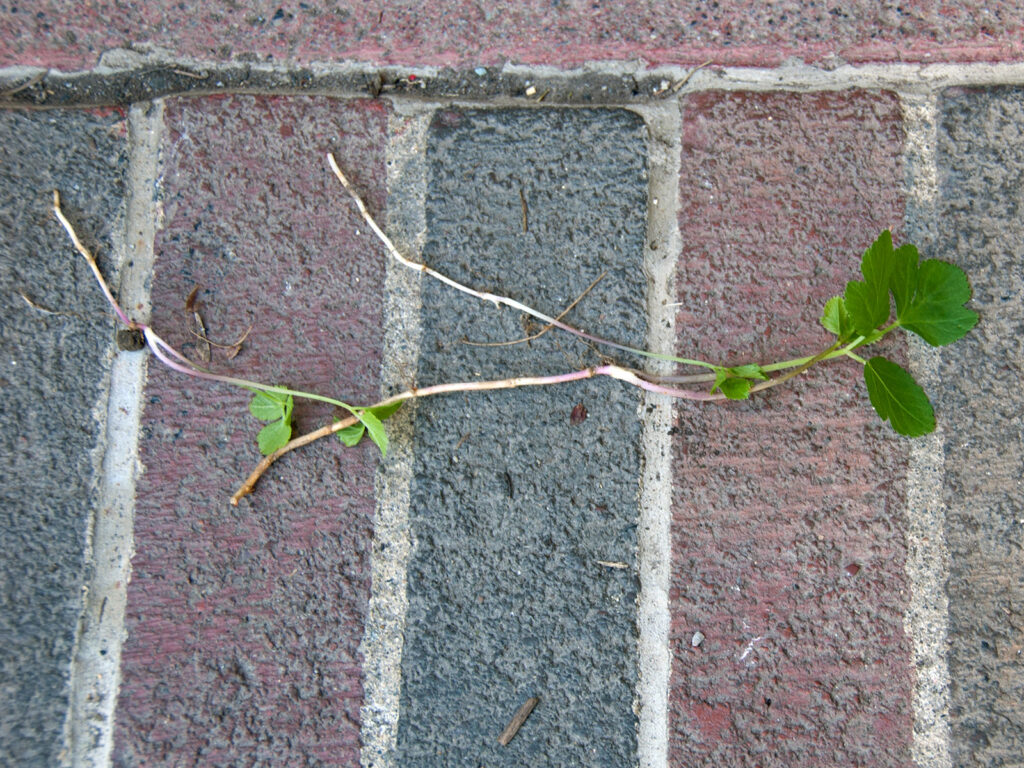
Since it was still a small patch, John was able to eradicate it by digging DEEP down to get all its roots.
You can see how it spreads so easily. Underground, there are long roots that spread.
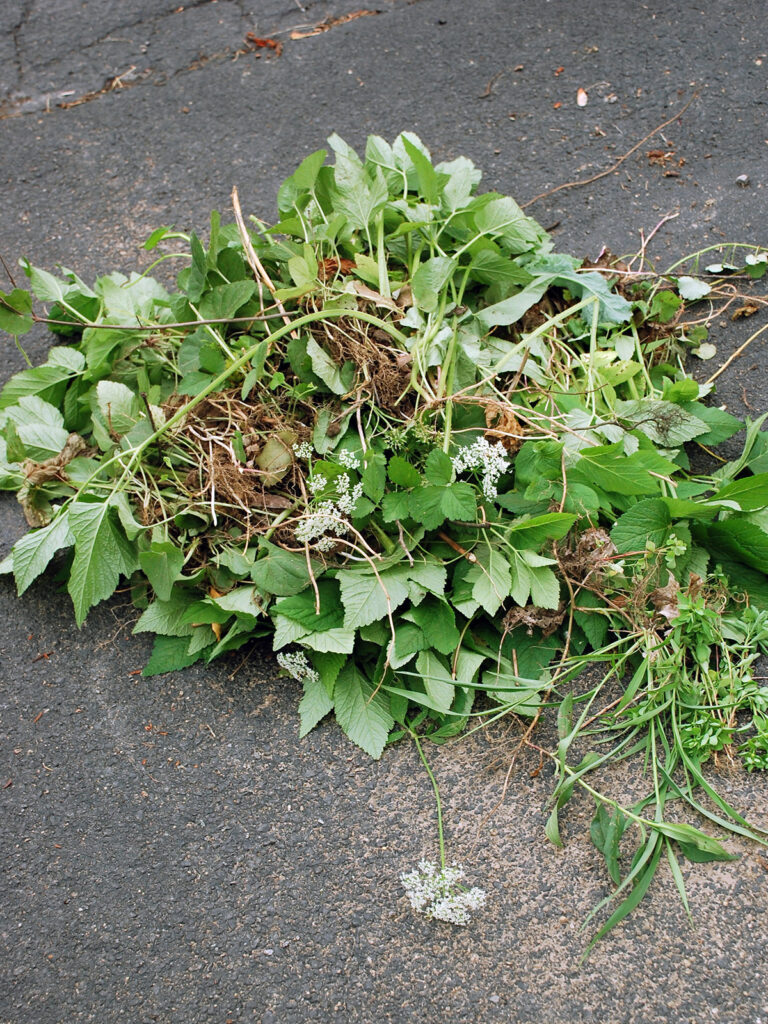
Even worse, we discovered a new patch that apparently had come in with some soil.
Since the pile of soil was in an out of the way spot at the edge of our yard behind some bushes, it grew to the point of actually flowering before we discovered it.
We covered the mound of soil with black plastic for a few years, and we seemed to successfully eradicate it.
What is most alarming is that not only is it still sold, but some university extension services even recommend it as a groundcover!! Sadly, despite the fact that there are some very knowledgeable people associated with these agencies, I always have to take the official recommendations with a big grain of salt since they sometimes have dual allegiances to industry and (sometimes less so) to the environment.
- Learn more:
- Ecosystem Gardening: Kill the Bishops Weed
Pachysandra (Pachysandra terminalis)
When most people think about pachysandra, they’re thinking of this invasive Japanese pachysandra, not aware that there is a native pachysandra that isn’t invasive. Bill Cullina describes it in his book as “the vinyl siding of landscaping.”
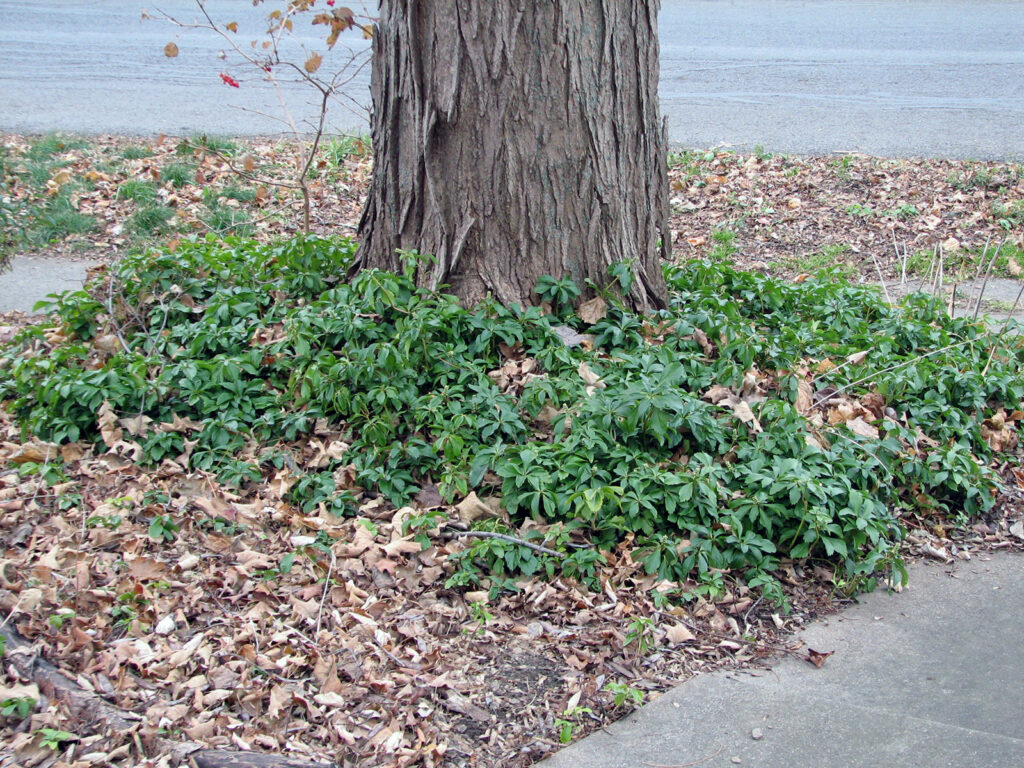
We gradually removed this patch of Japanese pachysandra around the sugar maple tree, pulling a little out a little each year. After many years, I finally spent a few hours and just pulled the rest of it all out.
I still see bits and pieces of it around the yard, but not much. When I see it, I pull it!
Besides being an invasive plant, the sheer amount of it planted in home and institutional landscapes means that there’s less room for other, more useful plants.
- Learn more:
- Invasive Plant Atlas
- Choose Natives: Did the pachysandra kill the hickory tree?
Garlic mustard (Alliaria petiolata)
I occasionally find garlic mustard growing in our yard — where it comes from I don’t know. I keep my eyes open for it, since it’s very controllable if you don’t ever let it go to seed.
It’s a biennial, so I try to make sure none of them make it to their second year, when they can create an enormous seed bank — a stash of seeds in the ground that can germinate for many years.
It’s not surprising it appears in our yard because it’s everywhere in CNY.
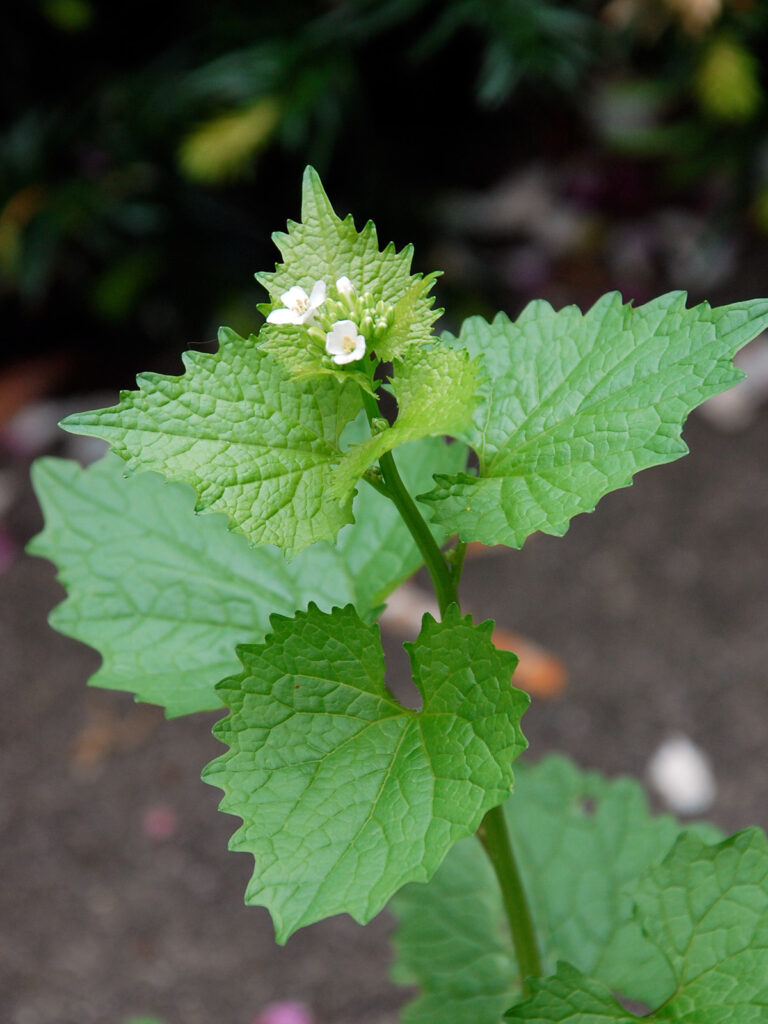
Our HGCNY Wild Ones chapter has been working since at least 2006 to clear a section of at our local nature center. These are all bags of garlic mustard, but there will be more the next year. We’ve made progress, but slowly since there is such a large seed bank.
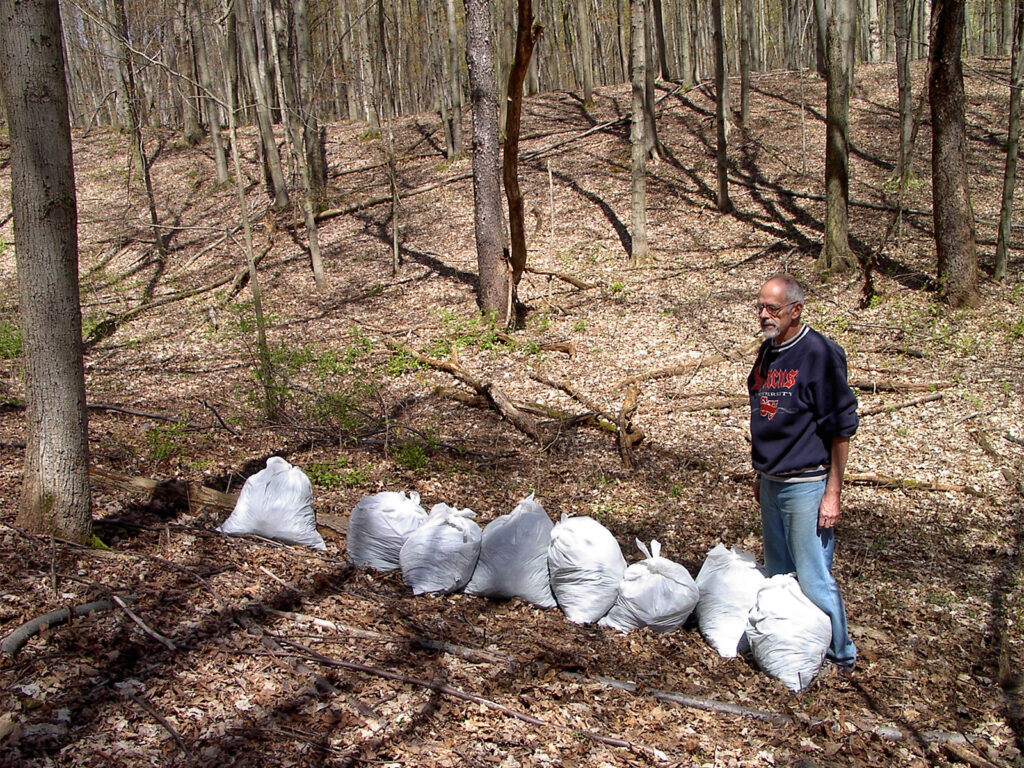
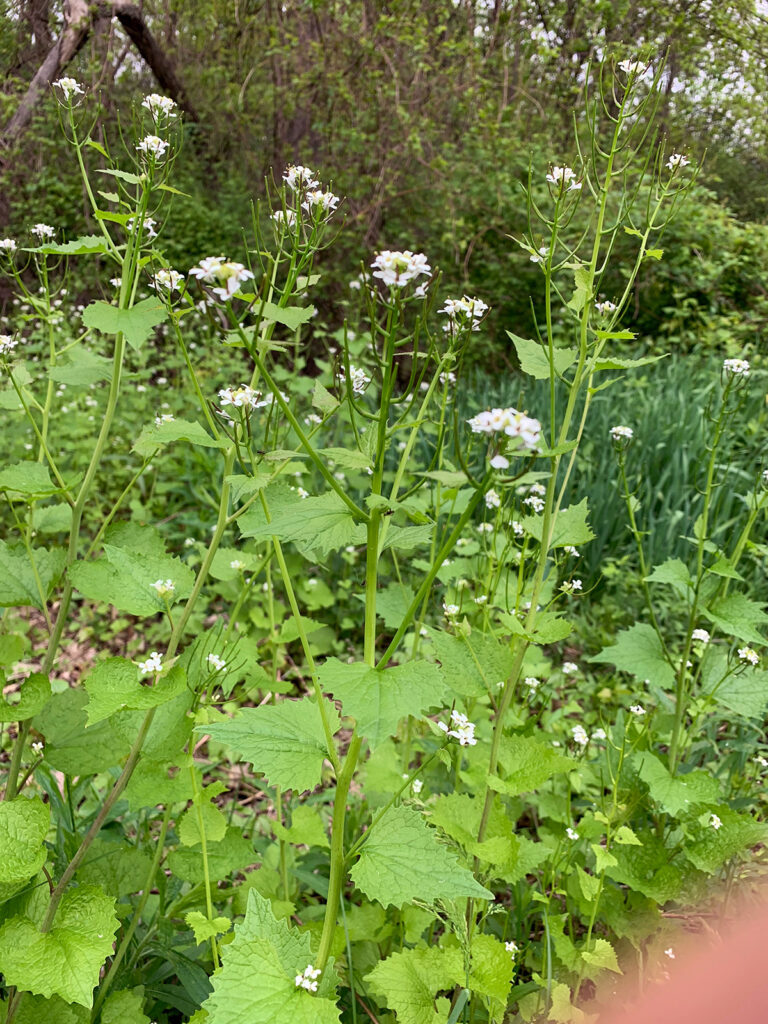
Garlic mustard is said to be alleopathic, exuding a chemical inhibiting the germination of seeds of other plants. It also interferes with the interaction between trees and mycorrhizal fungi — very bad news for our forests.
Garlic mustard may also have an unholy alliance with our non-native earthworms, especially problematic in natural areas. The earthworms may “pave the way” for garlic mustard by digesting forest leaf litter (the duff layer), thus creating the bare ground where it thrives.
- Learn more:
- The Nature Conservancy: Garlic mustard – Invasive, destructive, edible
- King County: Garlic mustard information
- Accent on Natural Landscaping: Garlic mustard II
- PennState Extension: A ubiquitous invasive weed
- “Some of our native butterfly species lay eggs on garlic mustard. When the caterpillars emerge, they feed on this plant, but it cannot sustain them. The caterpillars either die or don’t grow properly, interrupting the species’ life cycle.“
Dame’s rocket (Hesperis matronalis)
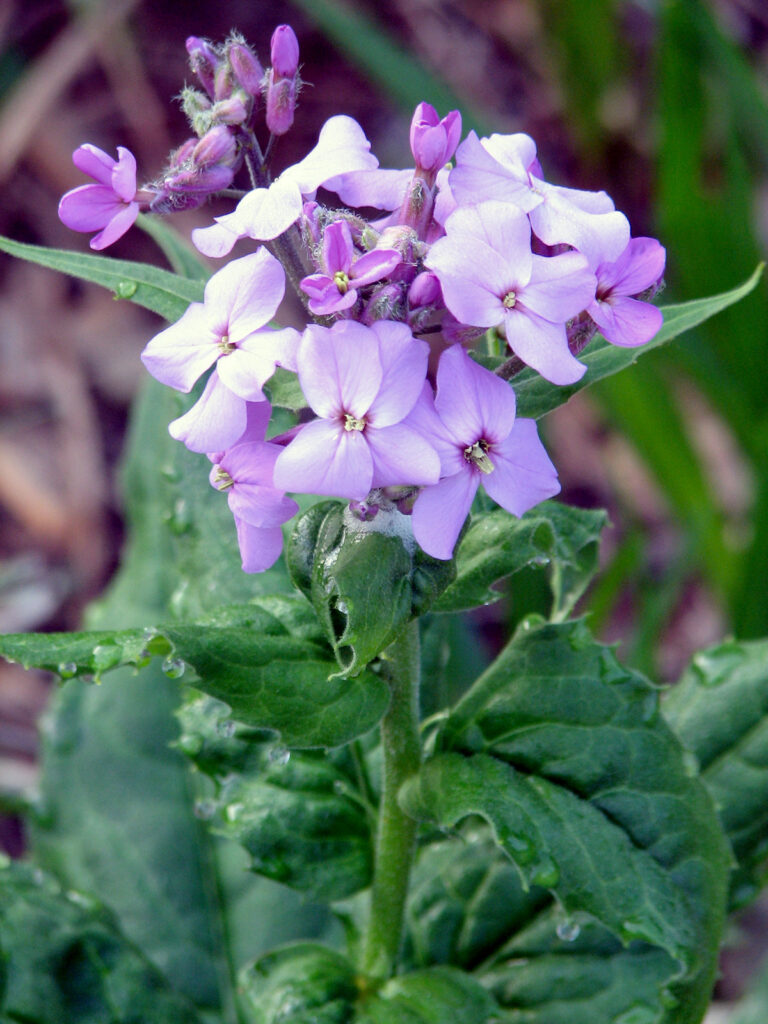
This dame’s rocket showed up in my yard one summer. It’s alarming to see how easy it is for these invasive plants to travel. Being in a more urban type of suburb, we’re pretty far from any location where you’d expect to see this growing.
Unfortunately, this is another of those plants with “pretty” flowers so people are reluctant to get rid of it.
But we show no mercy.
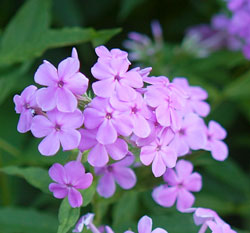
Dame’s rocket looks very similar to the native phlox (Phlox paniculata), which also grows along roadsides.
How to tell them apart? This trick helps me remember:
Dame’s rocket:
Has four petals and “dame” has 4 letters;
Phlox:
Has five petals and “phlox” has five letters.
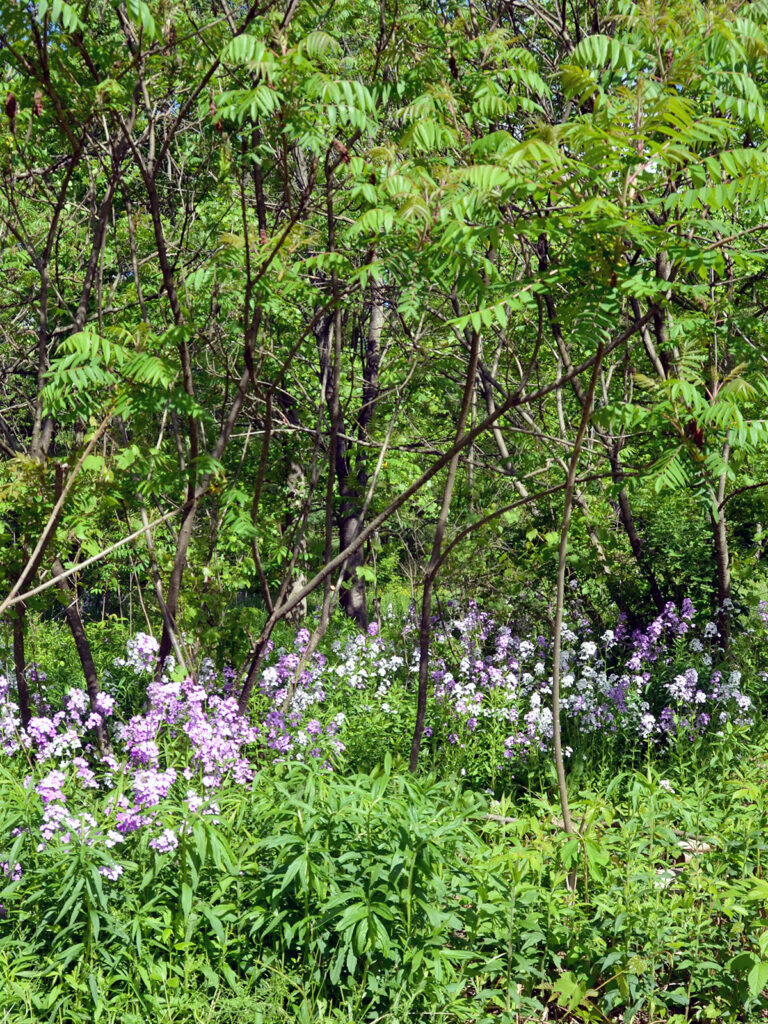
I spotted this combination at a local nature center: a patch of sumac with a underlayer of dame’s rocket.
Which of these two species do you think many people would think should be eliminated? Sumac is a great native, providing lots of habitat whereas dame’s rocket is a non-native invasive plant.
I know which one I’d eliminate!
- Learn more:
- Univ. of Michigan Matthaei Botanical Gardens: Invasive of the Week – Dame’s Rocket
Common daylily (Hemerocallis fulva)
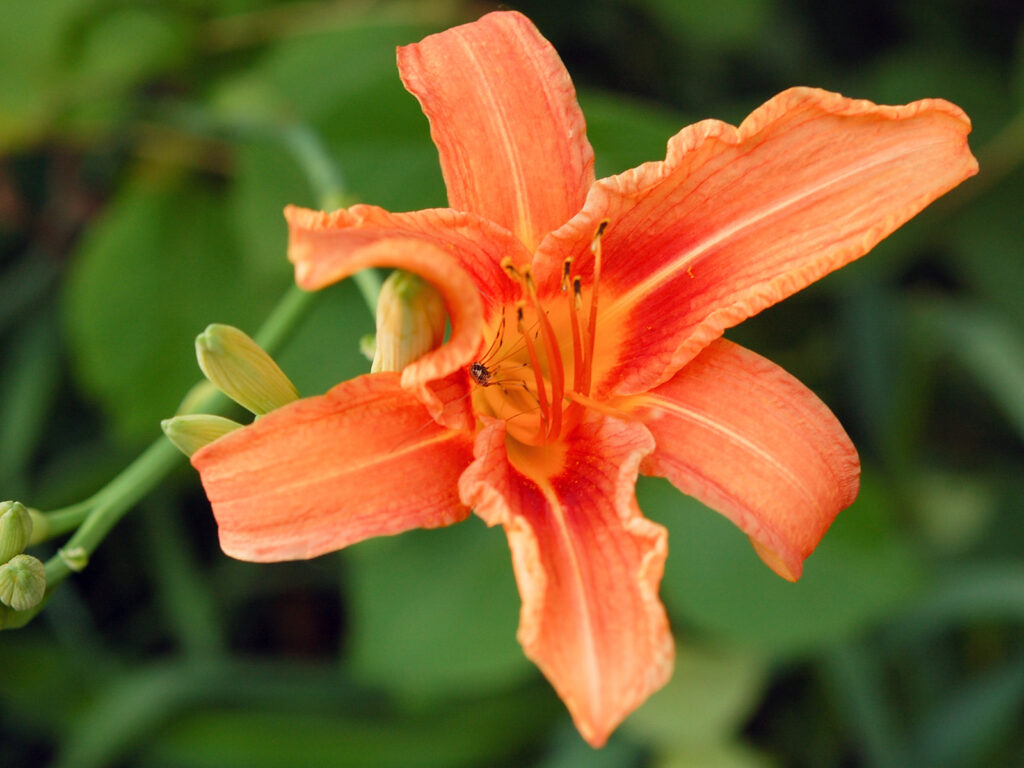
This is the daylily people think is native since it’s so commonly found growing along roadsides out in the country.
But that’s because people planted them long ago and they naturalized there. Just because plants are growing and reproducing independently doesn’t mean they’re native!
I had quite a few of these since they were given to me, and they filled in empty spaces — common excuses. In this case, it’s odd that I planted them because these roadside orange daylilies aren’t even very attractive.
I’ve managed to get rid of most of this roadside invasive, though they still lurk in corners since it’s hard to remove all of the tuber.
Back in my ornamental gardening days, I moved on to “named varieties” (i.e. expensive cultivars) of daylilies, sometimes paying $25 for one plant. Of course, I diligently divided these so I ended up with quite a few daylilies. Knowing how much I had paid for these, it was hard to compost them, but I did!
- Learn more:
- Choose Natives: Ditch the ditch lily
Resources
- Wild Ones – River City Grand Rapids chapter:
- Tale of two poppies – the native and the non-native
Reflections
Garlic mustard is one of the many invasive species introduced to North America forests from Europe and one of the very few plants that does not establish mycorrhizal associations. Chemicals released into the soil by this plant are responsible for disrupting the mycorrhizal associations of fungi and trees, with far-ranging, but still poorly understood, implications for the diversity and well-being of other life underground and aboveground.
~ James Nardi, Life in the Soil, p. 250-251
